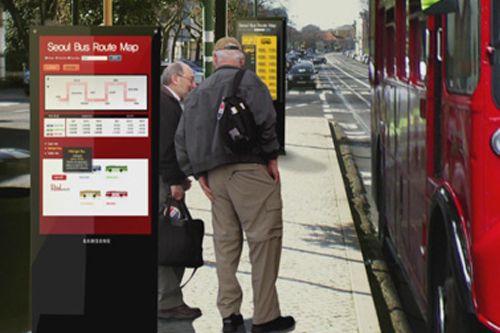Targeting Specific Audiences
Posted by: Richard Williams | Posted on: | 0 Comments
Outdoor advertising has one big advantage—audience size. For generations advertisers have realized this potential for targeting specific audiences by placing advertising messages, slogans and branding in outdoor environments. Adverts selling everything from holidays to beer, clothing to cars have traditionally littered High streets, transport hubs and shopping malls.
The only downside to outdoor advertising is catchall nature of the advertising. Unlike newspaper or TV adverts, where the type of publication or time of day of the programming can indicate particular demographics, outdoor adverts have traditionally been a one-size fits all medium. Sure, in some locations such as transport hubs, certain demographics can be predicted, namely commuters and travelers in this instance, but in general, outdoor advertisements are hard to target to a specific audience.
Digital signage, however, is different. As content is virtual, it is possible to schedule when the advertisement appears, appealing to certain demographics throughout the day. This provides many opportunities for advertising time specific products or judging certain demographics.
Food retailers, for instance, can start targeting specific audiences by promoting different products and menus to coincide with different meal times, helping to attract the spontaneous sales that makes up a large proportion of many fast food outlets’ revenue.
By targeting specific audiences advertisers can also provide content to coincide with the regular commute, or when kids leave school, helping them to get a more specific audience.
And the future of outdoor advertising may make audience targeting even more focused. Once the realm of science fiction, technology companies are increasingly unveiling facial recognition system, paving the way for more individually tailored advertising. In the future, advertisers will be able to keep a record of your past purchases, tailoring content to suit your buying habits when you pass a screen. Some facial recognition software already in use, is able to identify people’s moods enabling advertisers to target mood specific content to passersby.
Other systems proposed include interaction with web services like Facebook and Google, where information can be shared via smartphones, providing tailored content when the smartphone user passes a screen. While these systems may raise objections on privacy grounds, advertising authorities could set-up opt-out systems.
Post shortlink:
Popular Products
LCD Enclosure
Need armor for your LCD/LED screen(s)? Outdoors or inside the versatile LCD enclosure protects against thieves, vandals & the weather. Installation idea: NFL stadiums.
Outdoor Digital Signage
Exclusive 46” outdoor screen protection. Dubbed the ‘Totem’, due to its distinct design, it repels damage threats, but attracts audiences. Installation idea: Drive-thru restaurants.
Portrait Flat Panel Enclosure
Safeguard your eye-level advertising display screen(s), indoors or outdoors. Completely customizable, add exciting features like touch screen technology. Installation idea: Restaurant frontages.
Indoor Digital Signage
Popular purchase for retail outlets! Great for ‘point of sale’ persuasion, boost your brand with static & motion advertising from a single unit! Installation idea: Mall of America.





